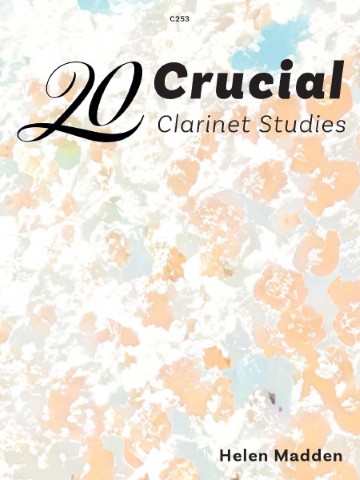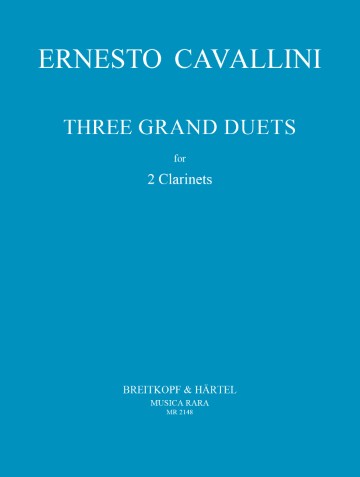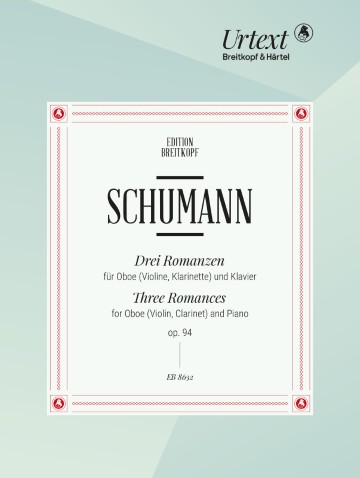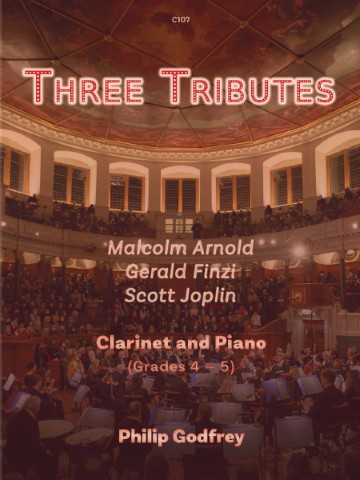Cinerama for 4 Clarinets
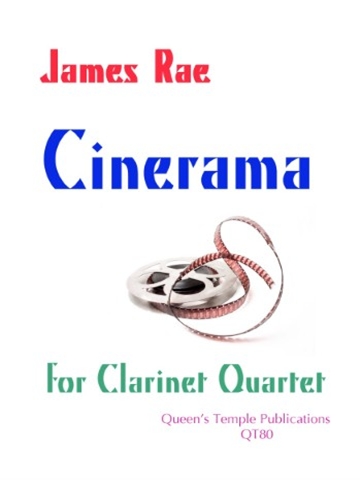
Composer: Rae, James
Instrumentation: 3 B-flat Clarinets, B-flat Bass Clarinet
Publisher:
| Product Code: | 979-0-708-01580-2 |
| ISMN: | 979-0-708-01580-2 |
| Publishers Number: | QT80 |
| Published date:: | 2006 |
| Language: | English |
| Page count: | 4 |
| Condition: | New |
Movement II: Newsreel
As a freelance clarinettist and saxophonist, he has worked professionally in nearly every possible musical situation from West End musicals to engagements with some of the country’s major orchestras.
James Rae lives in Carshalton Beeches in Surrey with his wife Sue. His interests outside of music are food, drink and anything at all to do with railways!
Information courtesy of Clifton Edition.
Cinerama is another witty and engaging work from the pen of the inimitable James Rae.
Comprises two delightful movements evoking the era of the cinema organ,…
Comprises two delightful movements evoking the era of the cinema organ, for three clarinets and bass clarinet.
A real audience winner.
Cinerama is a two‐movement chamber work by British composer and educator James Rae. Conceived for wind quintet and also arranged for clarinet quartet, it conjures the nostalgic atmosphere of cinema organ preludes and vintage newsreels.
Through witty textures and playful gestures, Cinerama bridges popular entertainment and serious chamber writing, inviting performers and audiences to revisit an era of grand movie‐palace spectacle.
Cinerama pays homage to the panoramic cinema events of the mid‐20th century. Its title references the widescreen film process that wowed audiences with immersive visuals.
Rae distills this grandiosity into two succinct movements:
The composer frames the first as an “Organ Interlude,” capturing the improvisatory flair of theatre organists.
The second, “Newsreel,” reflects the brisk editing and rhythmic drive of vintage news segments.
Instrumentation and Editions:
Cinerama exists in two primary versions. The original wind‐quintet scoring employs flute, oboe, clarinet, horn, and bassoon. A secondary clarinet quartet edition features three B-flat clarinets and one bass clarinet.
Both versions preserve Rae’s idiomatic writing and balanced ensemble textures, making the work suitable for school, university, and community groups.
Movement I: Organ Interlude
Organ Interlude evokes the lush registrations and improvisatory style of cinema‐hall organs. The flute and oboe share a flowing chorale theme, while clarinet and bassoon supply supporting arpeggios. Horn enters with sustained pedal notes, emulating organ reeds. Textural shifts from wide chords to agile filigrees demand precise ensemble balance and dynamic control.
Movement II: Newsreel
Newsreel unfolds with energetic motives that ricochet among the five parts. Short bursts of staccato figures recall film‐strip flicker and cut‐away edits. Rae layers syncopated patterns against a metrical bassoon ostinato, driving momentum forward. The movement culminates in a concise coda, where thematic fragments coalesce into a spirited finale that leaves audiences smiling.
Technical and Musical Challenges
Cinerama challenges players to blend theatrical flair with chamber precision. Key technical demands include:
Articulation agility in rapid staccato passages
Careful balancing of solo and accompanimental roles
Nuanced phrasing to evoke organ pedal and swell effects
Ensemble synchronization in shifting meters and tempo changes
Strong communication within the group is essential for smooth transitions between textures.
Programming and Audience Engagement
Cinerama’s vivid imagery and approachable style make it a programming favorite. It pairs well with both contemporary and classical repertoire. Consider placing it alongside works by Malcolm Arnold or Paul Hindemith for a mid‐century British wind showcase. Lecture‐recitals can enrich audience appreciation by demonstrating how Rae translates cinematic tropes into purely acoustic settings.
Notable Performances and Recordings
While Cinerama is seldom recorded commercially, several university ensembles have shared performances online. These renditions often highlight varied interpretive choices: some emphasize rubato in the first movement, whereas others opt for punchier tempos in Newsreel. Emerging wind groups can find inspiration in these interpretations, yet are encouraged to develop their own unique sound world.
Conclusion
Cinerama stands as a charming tribute to the golden age of cinematic
About the composer James Rae
James Rae was born on Tyneside in 1957. He studied clarinet, bass clarinet, piano and composition at the Guildhall School of Music and Drama from 1975-79. His professors were Yona Ettlinger, Stephen Trier, Meriel Jefferson and Patric Standford respectively. Since leaving the Guildhall, James Rae has pursued a highly successful and varied career in music. His work falls into three areas: performing, writing and teaching.
As a player, James Rae has worked in many West End and Royal National Theatre productions including Sir Peter Hall’s award winning Oresteia with music by Sir Harrison Birtwistle. He has also received many freelance engagements with some of the country’s leading orchestras and ensembles. Projects have included the EMI album Classic Ellington with Sir Simon Rattle and the C.B.S.O. Saxophone Quartet playing has featured strongly in James Rae’s career. He is the leader of the Phoenix Saxophone Quartet who over the years has given many recitals and broadcasts. They have also recorded the complete works of Carey Blyton on two albums The Return of Bulgy Gogo and Sherlock Holmes meets Dr Who.
As a composer, James Rae is one of Europe’s most published writers of educational wind music. He has at present over 120 publications to his credit published mainly by Universal Edition. His music includes instrumental study books, tutors, transcriptions and volumes of duets many of which are to be found on wind examination syllabuses worldwide. He has also written five musicals for schools in partnership with Mike Cornick.
As a teacher, James Rae has held many posts in both the state and independent sector and has tutored and conducted on numerous courses. He is currently saxophone professor for the National Youth Orchestra of Great Britain.
R.R.P 8.5
Our Price: 7.23
Digital Download – PDF
Shipping costs: No shipping
You might also like
-
20 Crucial Clarinet Studies
£5.91 -
3 Grand Duets
£23.00 -
3 Romances Op. 94
£10.00 -
3 Tributes for Clarinet and Piano
£8.46

